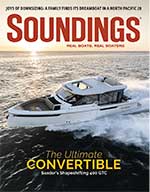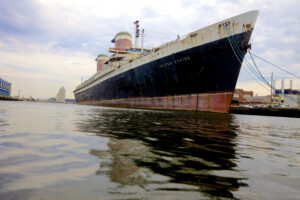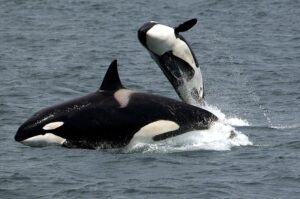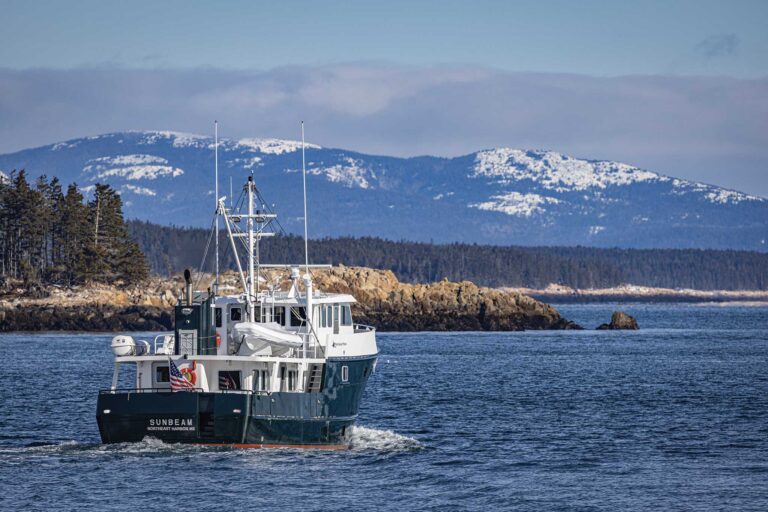Dubbed IPS 2, the new system is built around a more powerful 11-liter diesel
More than a dozen builders plan to equip boats with Volvo Penta’s new, more powerful pod-drive system with joystick steering — the IPS800 and IPS900, or “IPS 2,” according to the engine manufacturer.

The new Lazzara LSX 92, which will be on display at the Miami International Boat Show Feb. 12-16, is powered with four 700-hp IPS900s. “Besides Lazzara, we have an additional 12 IPS900 projects in various states of completion,” says Volvo Penta senior press coordinator Susan Lee.
The company says only four other builders have made the news official. Twin IPS900s will power new 49- and 57-foot express fishermen from Spencer Yachts and a 54-foot Ritchie Howell Express. Triple IPS900s will power the Sculley 54-foot convertible and the Freedom 56 Convertible.
“We’re very excited,” says Paul Spencer, founder and owner of sportfishing-boat builder Spencer Yachts in Wanchese, N.C. “It’s progress. I believe if you’re not trying to do something better, then you’re not doing your best job.”
The 49-foot Spencer should be completed by this summer, and two IPS-powered 57-footers soon after, says Spencer. The company has built two other boats — both 43-footers — using Volvo Penta’s IPS600s.
“IPS enhances your ability to fish by increasing the maneuverability,” says Spencer, whose company provided the input that led to the system’s “Sport Fish” mode for quick-pivoting maneuvers during battles with big fish. “I consider myself a hard-core fisherman. I have been for 30 years. Any skepticism of IPS is just that — skepticism. Our skepticism went away after we put IPS in our 43s.”
Until now, IPS engines have been Volvo Penta 4- and 6-liter diesels with a maximum of 435 hp. The IPS lineup included five different models using diesel power from 260 hp to 435 hp: IPS350 (260 hp), IPS400 (300 hp), IPS450 (330 hp), IPS500 (370 hp) and IPS600 (435 hp). The engine manufacturer also offers two gas versions: the IPS500G (375 hp) and IPS550G (400 hp).
Volvo’s 11-liter D11 diesels provide the power for the IPS800 (600 hp) and IPS900 (700 hp). The pods, drives and props are all new — and around 20 percent larger, according to Lee. “Not a single component from the previous IPS has been reused in the IPS 2 pod,” she says. “Larger engines with greater power and more than twice as much torque place enormous demands on drive units.”
The engine is equipped with a twin-entry turbo that enables pulse charging, a technique that, coupled with a mechanical compressor, provides powerful torque from low rpm. This technology is not used on the smaller IPS models, says Lee.
The new packages will be installable on boats to 100 feet and provide all the advantages and characteristics that made the original IPS system so successful, according to the company. There is no difference for the driver, whether the boat is powered by two, three or four IPS setups, according to Lee. Acceleration and shifting occur in the same manner. The boatbuilder chooses the propeller according to the IPS model and top speed of the boat.

Builders are looking forward to the increased fuel efficiency and overall performance that IPS will bring their boats. The Lazzara LSX 92, which debuted at the Fort Lauderdale International Boat Show in the fall, cruises at 28 knots and reaches a top speed of 31 knots with its quad IPS package, says Lazzara president Dick Lazzara. The yacht would need 30 to 40 percent more horses with conventional inboard power to achieve those performance numbers, he says.
The Spencer 57 with twin IPS900s will burn an estimated 1.5 gallons per mile at 30 knots, says Spencer. With 1,000-hp diesels, which would be necessary to achieve 30 knots, the 57 would burn 2.2 gallons per mile, he says.
For Freedom Boat Works, its IPS 2-powered 56-foot sportfisherman will be the company’s first vessel. “The smaller size of these units will give us more space,” says Freedom general manager Jim Polatty. The pod power — triple IPS900s — will allow the builder to include a fourth stateroom and a third head, he says. With conventional inboards, this boat would be limited to three staterooms and two heads, says Polatty.
“We’re gaining a full-beam master suite in space that would have been designated for the engine room,” he says.
This story originally appeared in the February 2009 issue.










